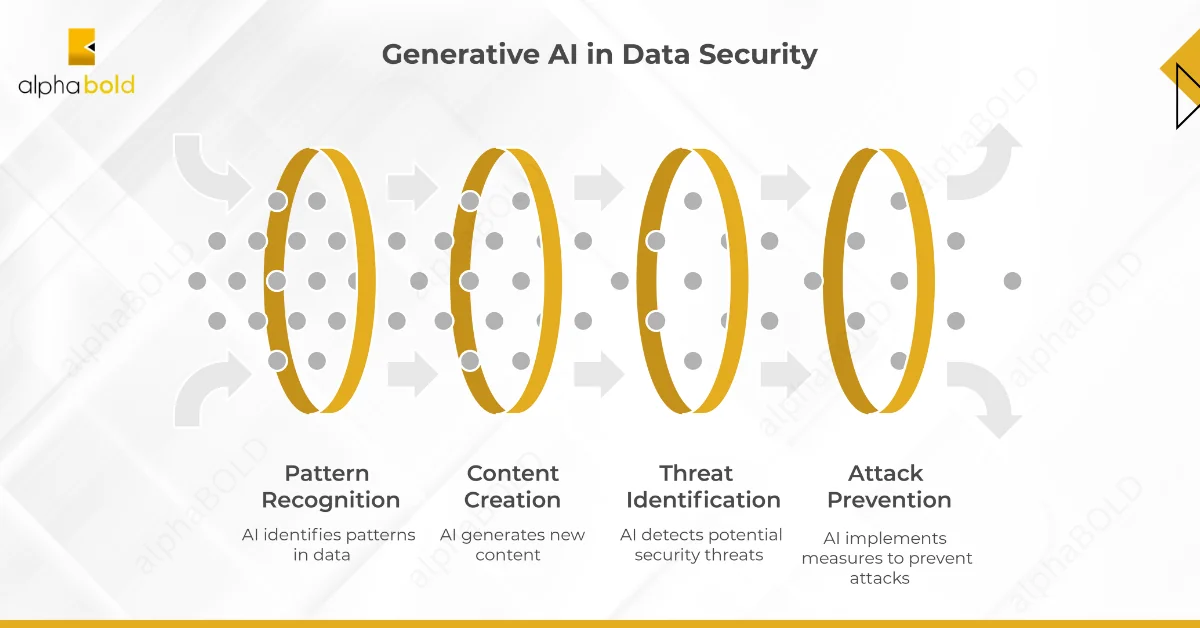Generative AI in Data Security: Mitigating Risks and Enhancing Protection
Table of Contents
Introduction
We’re living through an AI revolution, and the driving force behind it is Generative AI (GenAI). Over the past few years, we’ve seen this technology go from promising to game-changing, reshaping industries at a speed that’s almost hard to believe. Generative AI in data security is one of the most critical areas where it is making a significant impact.
A recent report shows that cybercrime is expected to cost the world $10.5 trillion annually by 2025. This staggering number highlights the urgency for better, more proactive security solutions.
Generative AI in data security is the key to mitigating risks and enhancing protection like never before.
In this post, we’ll explain how this technology plays a dual role in data security, helping you stay ahead of evolving threats. But first, let’s take a quick look at what generative AI really is and why it’s an absolute must-have for safeguarding your data.
Generative Artificial Intelligence

Generative AI in data security is transforming how businesses protect sensitive information. As a branch of artificial intelligence focused on content creation, this technology can generate natural language, images, and code by learning patterns from vast datasets. This capability makes it a powerful tool for innovation and automated cybersecurity, helping organizations identify threats and prevent attacks before they occur.
Some well-known families of generative AI models include GPT, Claude, and Gemini. For most users, these models are accessible through platforms like Microsoft’s AI Foundry, which offers access to over 1,800 models catering to various applications, including image synthesis, content creation, and data protection with AI.
Generative AI in Data Security: A Smarter Way to Stay Protected
Engage with our AI specialists to assess your organization's unique needs and develop tailored Generative AI in data security strategies.
Request a ConsultationRisk Migration
Anomaly Detection:
Threat Simulation:
Data Masking and Privacy:
Create synthetic data that has the properties of real data but does not reveal sensitive information. This synthetic data can be used for lower environments, such as development and testing. The team can work with the data without access to the original data, which improves privacy and helps maintain compliance.
Bonus read: Overcoming Technical Hurdles in AI Deployment.
Enhancing Existing Systems
Existing systems can be enhanced in several ways using this GenAI. These include:
Automated Security Protocols:
Encryption Techniques:
User Authentication:
Challenges
While this technology significantly boosts existing data protection mechanisms, it can also enhance attacks such as deepfake creation (to bypass authentication systems). Therefore, organizations must implement robust security measures. The ethical implications, such as data privacy and copyright, must be considered when using these systems.
Protect Your Organization with Advanced AI Security
Integrating Generative AI in cybersecurity can enhance threat detection, risk mitigation, and data protection. Our team can help design solutions that align with your goals and operations.
Request a ConsultationConclusion
The artificial intelligence landscape is the latest frontier, and understanding its implications for data security is crucial to staying ahead of malicious actors who are leveraging these tools. Generative AI in data security can help enhance the testing of your systems, identifying edge cases, and simulating attack flows.
Explore Recent Blog Posts







